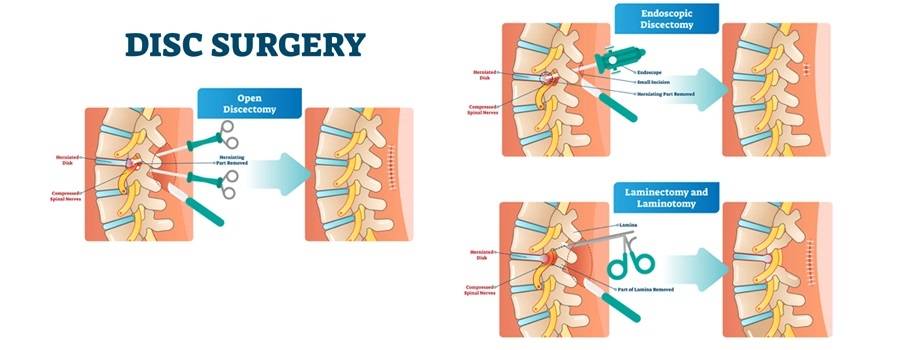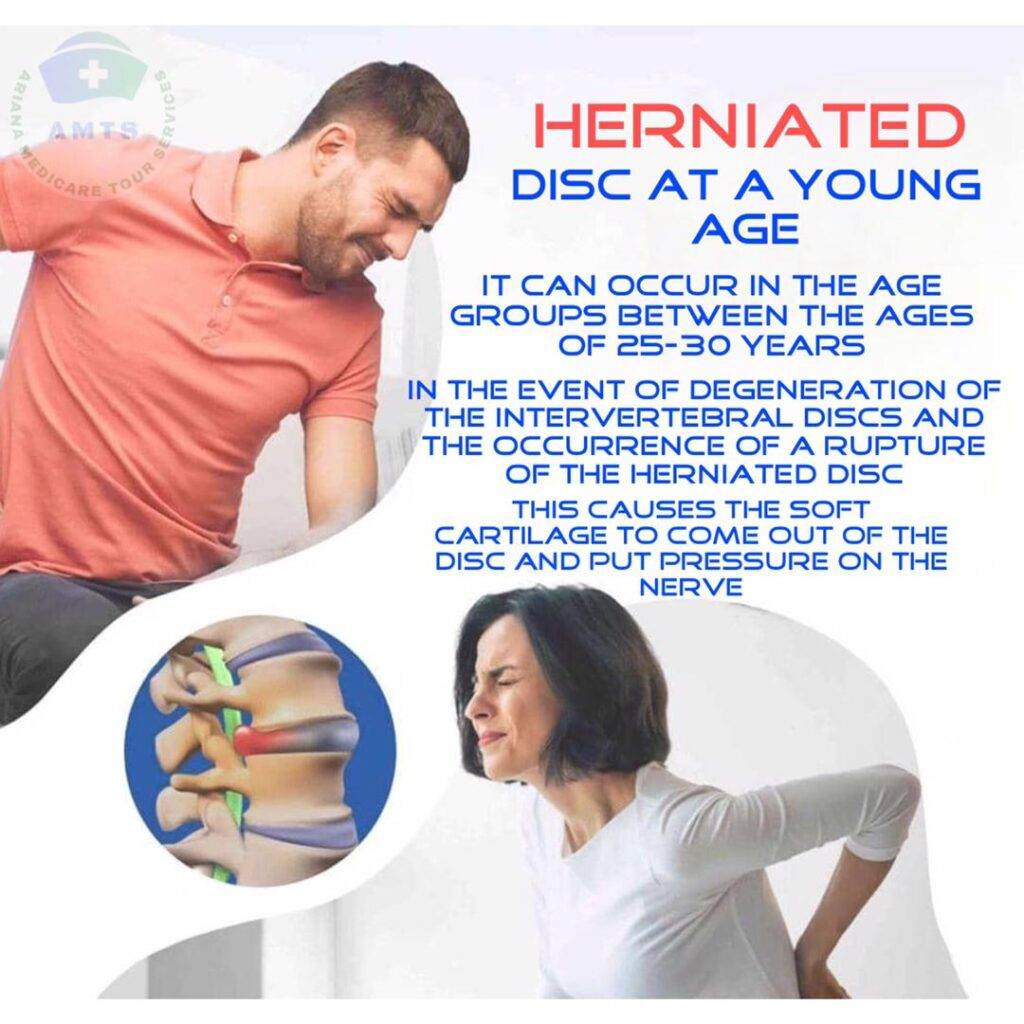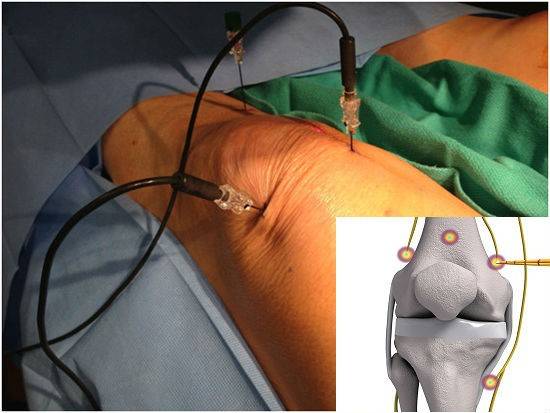Prepare for lumbar disc surgery, also known as herniated disc surgery, in Iran. Explore the different surgical techniques and methods available for herniated disc treatment in Iran. Iran provides advanced medical facilities and experienced surgeons who specialize in lumbar disc surgeries.
A slipped disc, or herniated disc, can cause severe pain and tension. In Iran, you can benefit from a range of surgical options, including traditional open surgery, minimally invasive surgical procedures, and laparoscopic techniques. These procedures aim to relieve pressure on the affected nerve and provide relief from symptoms.
Consult the specialized medical teams in Iran to discuss the most appropriate surgical method for your case. Enjoy personalized care, high-quality facilities, and a high level of medical expertise in Iran. Prepare for lumbar disc surgery and restore your quality of life by improving your spine health.
There are different ways to treat lumbar disc disease and sciatic nerve pain, including lumbar discectomy surgery and … In this article, we briefly explain the types of back, spine and herniated disc surgery and their equipment

Article contents:
Lumbar disc surgery in Iran.
Types of lumbar disc surgery in Iran.
- Laminectomy surgery.
- Microsurgery.
- Endoscopic Surgery.
- disk package operations.
- Medical treatments.
- When is spine surgery necessary?
- What is the main difference between traditional spine surgery and minimally invasive surgery in Iran and in the cities of Shiraz and Tehran.
- What measures should be taken before lumbar disc surgery in Iran?
- What are the points of care after lumbar disc surgery in Iran?
- How long is rest after lumbar disc surgery?
- How long does lumbar disc surgery take?
- Is lumbar disc surgery dangerous?
- What are the complications of lumbar disc surgery in young adults?
- What types of discs are suitable for laser lumbar disc surgery?
- In which cases is platinum lumbar disc surgery necessary?
- Latest article about lumbar disc surgery in Iran.
- Frequently asked questions about lumbar disc in Iran in Shiraz and Tehran.
When is spine surgery necessary?
What is the main difference between traditional spine surgery and non-surgical spine treatment?
Lumbar disc surgery in Iran in Shiraz, Tehran and Mashhad
Back pain is a very common problem that surgery often fails to treat. Lumbar disc surgery can relieve some causes of pain in this area, but it is rarely needed. Most back pain resolves by itself within 3 months. Low back pain is one of the most common complaints of patients who visit a doctor.
Back problems such as anti-inflammatory medications, heat therapy, and physical therapy usually respond to nonsurgical treatments.

Types of lumbar disc surgery in Iran
Lumbar disc surgery or spine surgery is not a method doctors recommend from the onset of back pain. This type of surgery is performed to prevent pressure on the spinal cord when the discs of the back and neck are protruding and there is no other treatment than surgery.
But in any case, when the doctor finds out when to perform this operation, it means that there is no other treatment. Spinal surgery requires special equipment, and in addition, it is sometimes necessary to use different types of implants to solve the patient’s problem.
1_ Laminectomy surgery
Lumbar disc surgery can be performed using local anesthesia or general anesthesia. To perform this type of lumbar disc surgery, the patient is usually placed on the stomach and a small incision is made in the back of the back in the operating room. In the usual method of disc surgery, after opening the muscles, the posterior overruns of the vertebrae are seen.
In this type of lumbar disc surgery, it is seen by removing part of the posterior bypasses of the layer surrounding the spinal canal and the nerve root. By removing the nerve root of the defective disc, the ruptured part of the disc is removed along with the central part, and after making sure that the nerve root is released, the Suture the operation site layer by layer up to the surface of the skin.

2_ Disc microsurgery in Iran
In the microscopic method of lumbar disc surgery, the incision is much smaller and the disc is removed with the help of a microscope and usually without removing the posterior bypasses. The advantage of this method is that in addition to a smaller surgical incision and no damage to the bone elements, and with the magnification obtained from the microscope, the probability of nerve root damage is very low.
The patient returns to normal life faster. It is a very standard and useful method and today it is the most important surgical method for all types of disc diseases.

3_ Laparoscopic disc surgery in Iran
In endoscopic lumbar disc surgery, a very small incision is made parallel to the midline, and with the insertion of the endoscope, the surgeon removes the ruptured piece of the disc after removing the muscles and removing the ligaments. In this type of lumbar disc surgery, due to the surgeon’s limited vision, it is not possible to remove the stiff discs with this The method, which is generally beneficial for free segment surgery, has a higher chance of recurrence.

4_ Disk package operations in Iran
The decompression device is like a very fine needle sent into the disc after anesthetizing the skin, and the inside of the disc is crushed by a micro motor and discharged from the body through this tube. nucleotomy using a nucleotomy apparatus with a thin tube; It enters the middle part of the disc and crushes the disc with water pressure and removes it from the body. In laser discectomy, it is burned with a special needle in the closed disc method and shrinks to some extent.
This method of lumbar disc surgery is only useful for small discs without rupture, unlike most advertisements, and its effect is low and it is believed that it is only performed for small discs without duct narrowing.

5_ Medical treatments
The first step and best course of action for patients with sciatica or pain caused by lumbar disc disease is medical treatment such as rest, drug therapy and physiotherapy but in cases of severe pain or accompanied by neurological symptoms such as muscle weakness or urinary problems, urination and stool disorders, it is best to perform disc surgery. lumbar spine sooner.
6_ When is spine surgery necessary?
When people come to us with symptoms in the extremities, we always recommend that they be examined and assessed by their GP. if a person has pain in the lower back or neck; We usually monitor him over time and encourage him to engage in appropriate and sustainable physical activities. If his problem isn’t resolved with physical activity, over-the-counter remedies, and anti-inflammatory medications or painkillers, the next step would be to see a doctor for evaluation.
Time pass and lumbar disc surgery are the only things that have been shown to be beneficial for patients with spine problems. All the others are just for symptom management so the body can naturally resolve the issue. In cases where the body is unable to resolve the problem, surgery becomes an appropriate option. The majority of patients with spine problems can be treated with non-surgical and conservative methods.
Aside from the very few exceptions, we recommend physical therapy, home exercises, medication, and sometimes spinal injections to almost all of our patients prior to surgery. If a person suffers from the following conditions, lumbar disc surgery may be suggested:
- Having a problem with the spinal cord.
- Severe weakness in the hands, feet, or other extremities.
- All maintenance methods fail to fix the problem
7_ What is the main difference between traditional spine surgery and minimally invasive surgery in Iran and in the cities of Shiraz and Tehran?
Conventional or open spine surgery involves opening up the entire treatment area. In minimally invasive surgery, the treatment area is opened much less often and in many cases the person recovers faster. In minimally invasive surgery, in order to achieve the same results as open surgery, more information is usually used, such as computed tomography, 3D images, etc. Regardless of the type of surgery, the long-term goals are the same. The purpose of surgery is to improve symptoms or prevent further zinc loss.
In our operations, we want less bleeding, a shorter hospital stay, a faster recovery, and less chance of infection.
For this reason, we try to maximize the benefits of surgery for the patient and minimize the harm as possible. If there is a technique or a tool to achieve these goals, we always use it in our clinic. Also, techniques and methods whose effectiveness has not been proven will not be used in this center.

8_ What are the procedures to be taken before lumbar disc surgery in Iran?
As we said above, lumbar disc surgery requires special care before and after surgery. In order to be as successful as possible in this operation, it is necessary to consider the following points some time before the surgery:
- About 6 hours before the operation, do not eat or drink anything as advised by the doctor.
- Keep your diet balanced and exercise regularly.
- Before the operation, read the consent form carefully to know the possible risks of the operation.
- To help your recovery after surgery and reduce your risk of complications, make an effort to stay fit.
- If you smoke, try to quit as soon as you find out that you will have lumbar disc surgery.
- Show up for an evaluation a few days or weeks before surgery. During this visit, your doctor will order blood tests, x-rays, and an MRI to check your general health.
9_ What are the points of care after lumbar disc surgery in Iran?
Unfortunately, some people do not follow the necessary recommendations after lumbar disc surgery, and this slows down the healing process. To prevent recurrence of the meniscus and possible complications after the operation, you should pay attention to some points that we mention below:
- Take the prescribed medications on time and according to the doctor’s orders so that the pain can be relieved faster.
- Take good care of your back incision site during the initial recovery period. The possibility of infection in the wound area during limited activities such as swimming or showering is high.
- Set aside a certain amount of time each day for movement and gentle walks. Inactivity and not walking enough weakens the muscles and exacerbates symptoms such as pain and stiffness after surgery.
- Avoid excessive activity such as lifting heavy objects or putting too much pressure on the lower back. Failure to comply with this problem leads to increased pain or re-injury and requires additional treatment.
10_ How long is the rest period after lumbar disc surgery?
Home comfort is one of the main requirements for the effectiveness of lumbar disc surgery. If you do not get enough rest after the operation, the healing of the connective tissues will be delayed.
The length of time you should rest after the operation varies according to your physical condition. However, it is said that with four to six weeks of rest, significant disc recovery is observed. Two months after the operation, the disc injuries are generally healed. So you need to rest for about two months after the operation and make sure to do the above points.
11_ How long does lumbar disc surgery take time?
In most cases, the patient is under general anesthesia during lumbar disc surgery. So he will be asleep during the operation and will not feel any pain. Therefore, the anxiety caused by the duration of the operation and the prolongation of the surgery is pointless.
Most doctors estimate the duration of lumbar disc surgery to be about an hour or more. However, depending on the complexity of the operation and the condition of the patient, you may be under the knife for a longer period of time.
12_ Is lumbar disc surgery dangerous?
In general, lumbar disc surgery is associated with a high success rate. Statistics show that about 80% of patients undergo successful surgery. However, the recovery time for patients treated with surgery is longer than for those who underwent non-surgical treatments.
Of all lumbar disc surgeries, microdiscectomy is the least invasive type of surgery. Of course, about 10% of patients who undergo microdiscectomy subsequently have a recurrence of the herniated disc.
13_ What are the complications of lumbar disc surgery in young adults?
Unfortunately, lumbar disc surgery itself has many complications and the incidence of these risks is higher in younger people. The reason for this may be their young age and not paying enough attention to the doctor’s recommendations regarding pre- and post-operative care. In addition, studies show that the complication rate of lumbar disc surgery is higher in people with diabetes than in other people.
Usually, lumbar disc surgery is associated with the following complications:
- Numbness and tingling in the back.
- Nausea for up to 24 hours after the operation.
- Double nerve damage in the back and legs.
- Urinary problems, including frequent urination.
- Pulmonary embolism due to blood clots in the pulmonary vessels.
- Infection in the wound area if it is not disinfected.
- Digestive problems such as constipation and urinary incontinence.
- A cascading headache due to leakage of cerebrospinal fluid into other parts of the body.
- Recurrence of disease in 5-15% of young men due to immobility and lack of adherence to post-operative care.

14_ What types of discs are suitable for laser lumbar disc surgery?
Mild, small discs with minor problems often improve with laser surgery and do not require coating or cutting. In fact, a laser is an amplified light that is used for many therapeutic purposes nowadays. Some lumbar disc injuries can also be treated in this way, the most important of which are:
- Sciatica pain.
- disc bulge.
- Lumbar disc rupture.
- The treatment time for lumbar disc surgery with laser is much shorter than with platinum surgery. So that the patient immediately returns home after the operation and recovers by staying in bed for a day.
15_ In which cases is platinum lumbar disc surgery necessary?
Since platinum is a titanium material and has a high resistivity, it is used in some lumbar disc operations. In cases where there is a need to strengthen parts of the spine, lumbar disc surgery using platinum is performed. This type of surgery is used to treat the following problems:
- Lumbar fracture.
- Kyphosis or curvature of the spine.
- Sliding of the vertebrae of the spine.
- Severe and prolonged spinal stenosis.
16_ Latest article about lumbar disc surgery in Iran
Lumbar disc surgery is one of the most difficult joint surgeries as it requires a lot of care. Depending on the type of disc and the patient’s symptoms, this operation is performed in different ways, such as microdiscectomy, laparoscopy, discectomy, laminectomy, etc. Each of these methods has its advantages and disadvantages and is recommended at the discretion of the physician.
In general, laser and platinum lumbar disc surgery can be performed with both open and closed methods. Mild to moderate discs can be laser treated without the need for a knife. While the sharp and prominent disc must be cut with a knife and under anesthesia.
However, you should be careful before and after lumbar disc surgery in order to see your recovery as soon as possible.
17_ Frequently asked questions about lumbar disc in Iran in Shiraz and Tehran
- Is lumbar discectomy a major and risky surgery?
In general, recovery times from microdiscectomy are much faster than from invasive spine surgeries. But this surgery has its own difficulties and requires anesthesia.
- Is back surgery painful?
Yes, unfortunately, recovering from spine surgery is very painful. The amount of pain is usually most severe in the first one to three days after the operation and decreases gradually.
- Is there a possibility of disc recurrence after discectomy?
Yes, about 25% of people who have a successful discectomy have recurrent herniated discs later.
Read more about other articles in the medical fields (Cosmetics and Medical)
- Hair Transplant in Iran
- Rhinoplasty (Nose Job in Iran)
- Face Lift Surgery (Rhytidectomy) in Iran
- Breast Lift in Iran
- Chin Surgery in Iran
- Liposuction in Iran
- Tummy Tuck (abdominoplasty) in Iran
- Butt augmentation (Brazilian butt lift) in Iran
- Breast Augmentation in Iran
- Eye Care in Iran
- Cataract Surgery in Iran
- Diabetic Retinopathy Treatment in Iran
- Heart Surgery in Iran
- Knee replacement in Iran
- Eyelid Surgery In Iran
- Safe Abortion in Iran


